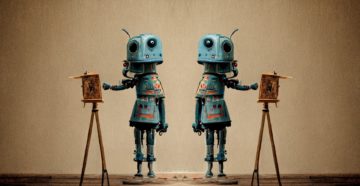From Science:
 The capabilities of a new class of tools, colloquially known as generative artificial intelligence (AI), is a topic of much debate. One prominent application thus far is the production of high-quality artistic media for visual arts, concept art, music, and literature, as well as video and animation. For example, diffusion models can synthesize high-quality images (1), and large language models (LLMs) can produce sensible-sounding and impressive prose and verse in a wide range of contexts (2). The generative capabilities of these tools are likely to fundamentally alter the creative processes by which creators formulate ideas and put them into production. As creativity is reimagined, so too may be many sectors of society. Understanding the impact of generative AI—and making policy decisions around it—requires new interdisciplinary scientific inquiry into culture, economics, law, algorithms, and the interaction of technology and creativity.
The capabilities of a new class of tools, colloquially known as generative artificial intelligence (AI), is a topic of much debate. One prominent application thus far is the production of high-quality artistic media for visual arts, concept art, music, and literature, as well as video and animation. For example, diffusion models can synthesize high-quality images (1), and large language models (LLMs) can produce sensible-sounding and impressive prose and verse in a wide range of contexts (2). The generative capabilities of these tools are likely to fundamentally alter the creative processes by which creators formulate ideas and put them into production. As creativity is reimagined, so too may be many sectors of society. Understanding the impact of generative AI—and making policy decisions around it—requires new interdisciplinary scientific inquiry into culture, economics, law, algorithms, and the interaction of technology and creativity.Generative AI tools, at first glance, seem to fully automate artistic production—an impression that mirrors past instances when traditionalists viewed new technologies as threatening “art itself.”
More here.
